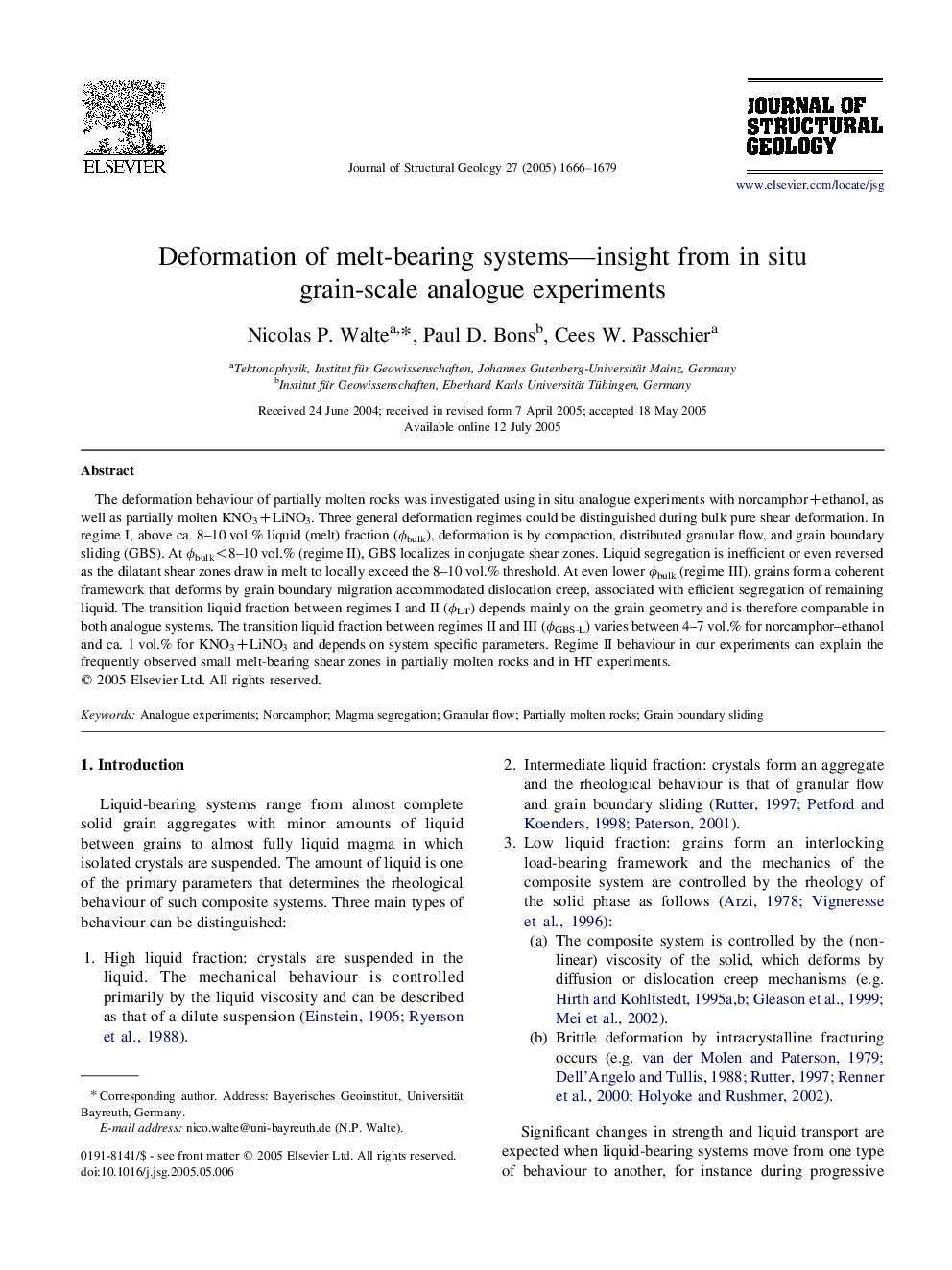| Article ID | Journal | Published Year | Pages | File Type |
|---|---|---|---|---|
| 9536183 | Journal of Structural Geology | 2005 | 14 Pages |
Abstract
The deformation behaviour of partially molten rocks was investigated using in situ analogue experiments with norcamphor+ethanol, as well as partially molten KNO3+LiNO3. Three general deformation regimes could be distinguished during bulk pure shear deformation. In regime I, above ca. 8-10Â vol.% liquid (melt) fraction (Ïbulk), deformation is by compaction, distributed granular flow, and grain boundary sliding (GBS). At Ïbulk<8-10Â vol.% (regime II), GBS localizes in conjugate shear zones. Liquid segregation is inefficient or even reversed as the dilatant shear zones draw in melt to locally exceed the 8-10Â vol.% threshold. At even lower Ïbulk (regime III), grains form a coherent framework that deforms by grain boundary migration accommodated dislocation creep, associated with efficient segregation of remaining liquid. The transition liquid fraction between regimes I and II (ÏLT) depends mainly on the grain geometry and is therefore comparable in both analogue systems. The transition liquid fraction between regimes II and III (ÏGBS-L) varies between 4-7Â vol.% for norcamphor-ethanol and ca. 1Â vol.% for KNO3+LiNO3 and depends on system specific parameters. Regime II behaviour in our experiments can explain the frequently observed small melt-bearing shear zones in partially molten rocks and in HT experiments.
Related Topics
Physical Sciences and Engineering
Earth and Planetary Sciences
Geology
Authors
Nicolas P. Walte, Paul D. Bons, Cees W. Passchier,
